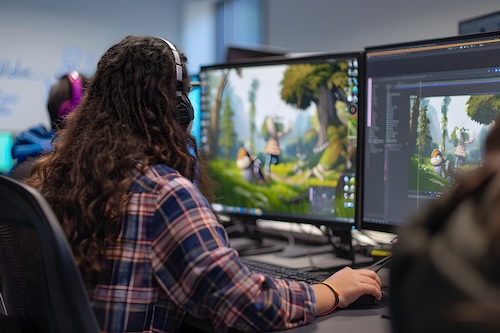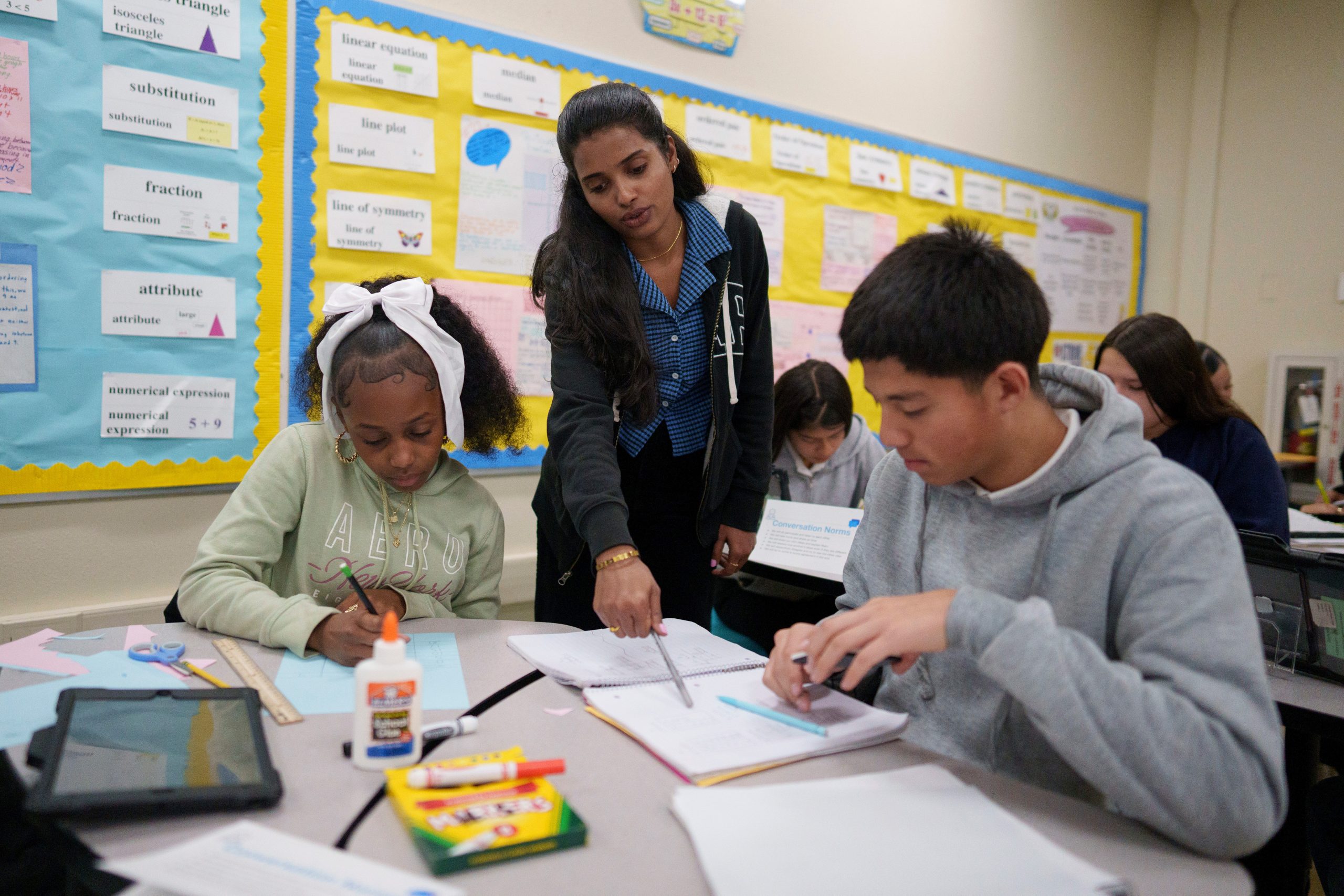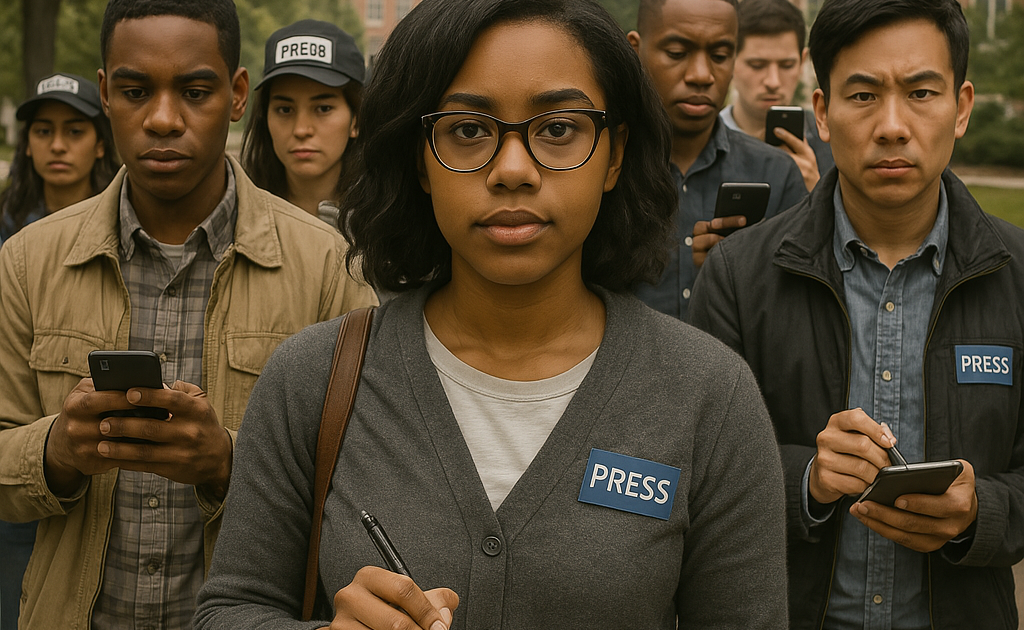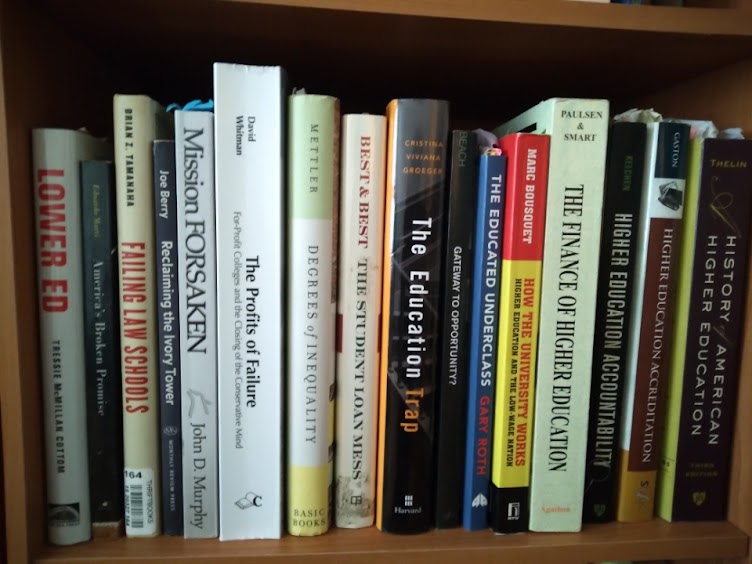If you have spent time with today’s high school students, you know their college search journey looks nothing like it did ten, or even five, years ago. A glossy brochure or a well-timed postcard still has a place. However, the first “hello” increasingly comes through a digital assistant, a TikTok video, or a quick artificial intelligence–powered search.
Let us not pretend artificial intelligence (AI) is everyone’s new best friend. Some students are eager, some are eye-rolling, and plenty are stuck in the “maybe” camp. That mix of excitement and hesitation is real, and it deserves as much attention as hype.
The data is clear: nearly half of students (45 percent) have already used a digital AI assistant on a college website, with usage peaking among 9th- and 10th-graders (RNL, Halda, & Modern Campus, 2025). At the same time, a full third of students nationwide have turned to tools like ChatGPT to explore colleges, scholarships, and even essay help (RNL & Teen Voice, 2025).
This trend is playing out nationwide, with major news outlets reporting that AI chatbots are becoming a common part of the college application process, assisting students with everything from brainstorming essays to navigating deadlines (Singer, 2023).
For many students, AI is not futuristic; it is already woven into how they imagine, explore, and narrow their choices. Recent reporting confirms that AI-driven college search platforms are helping more students, especially those without access to personalized guidance, find the right fit and expand their options beyond what they might have considered on their own (Greenberg, 2025).
Beyond RNL: What other research shows
The RNL findings fit a much bigger story about how AI changes education. Around the world, researchers are watching students test, tinker, and sometimes wrestle with what these tools mean for learning and planning.
One line of research looks at predictive modeling. Recent studies have shown that AI-driven platforms can analyze student data, grades, extracurricular activities, and demographics to predict which students are likely to pursue college and which might need extra support (Eid, Mansouri, & Miled, 2024). By flagging students at risk of falling off the college pathway, these predictive systems allow counselors to intervene earlier, potentially changing a student’s trajectory.
Another cluster of studies zeroes in on personalized guidance. Tools built around a student’s interests and goals can recommend classes, extracurriculars, and colleges that “fit” better than a generic list. This is especially important in schools where one counselor may juggle hundreds of students (Majjate et al., 2023).
Meanwhile, students are already using AI, sometimes in ways that make their teachers nervous. A Swedish study added some nuance: the most confident students use AI the most, while those who are already unsure of their skills tend to hold back (Klarin, 2024). That raises real equity questions about who benefits.
And not all students are fans. Some research highlights concerns about privacy, over-reliance, and losing the chance to build their problem-solving muscles. It is a reminder that skepticism is not resistance for resistance’s sake but a way of protecting what matters to them.
On the institutional side, surveys suggest that many colleges are preparing to use AI in admissions, whether for transcript analysis or essay review. Recent coverage underscores that admissions offices are increasingly turning to AI tools to streamline application review, identify best-fit students, and even personalize outreach (Barnard, 2024).
If all of this feels like a promise and a warning label, it is because it is. AI can democratize access to information, but it can also amplify bias. Students know that. And they want us to take their concerns seriously.
Empower your leadership and staff to harness the power of AI.
Don’t get left behind in the AI transformation for higher education. See how RNL’s AI Education Services can help your leaders and staff unlock the full potential of AI on your campus.
Meet the pioneers, aspirers, resistors, and fence-sitters
As revealed by our research in The AI Divide in College Planning (RNL & Teen Voice, 2025), not all students approach artificial intelligence the same way. Four personas stand out:
- Pioneers are already deep in the mix, using artificial intelligence for research, essays, and scholarship searches. Many say it has opened doors to colleges they might not have even considered otherwise.
- Aspirers are curious but want proof. They like the idea of scholarship searches or cost planning, but need easy, free tools and success stories before they commit.
- Resistors lean on counselors and family. They are worried about accuracy and privacy, but might come around if an advisor they trust introduces the tool.
- Fence-Sitters are classic “wait and see” students. A third might trust artificial intelligence to guide them through the application process, but the majority are still unsure.
The takeaway? There is no single “artificial intelligence student.” Institutions need flexible strategies that welcome the eager, reassure the cautious, and do not alienate the skeptics.
What happens after the chatbot says, “Hello“?
One of the most striking findings from the E-Expectations study is that students rarely stop at the chatbot (RNL, Halda, & Modern Campus, 2025). After engaging with an AI assistant, they move. Twenty-nine percent email admissions directly, 28% click deeper into the website, 27% fill out an inquiry form, and almost a quarter apply.
In other words, that little chat bubble is not just answering frequently asked questions. It is a launchpad.
Personalization meets privacy
Here is another twist. While most students (61%) want personalization, they want it on their terms. Nearly half prefer to filter and customize their content, while only 16% want the college to decide automatically (RNL, Halda, & Modern Campus, 2025).
That is the sweet spot for artificial intelligence: not deciding for students but giving them the levers to design their journey.
What this means for your enrollment teams
- AI is not just a front-end feature but a funnel mover. Treat chatbot engagement like an inquiry. Have a system ready to respond quickly when a student shifts from chatting to acting.
- Remember the personas. Pioneers want depth, Aspirers want reassurance, Resistors want trusted guides, and Fence-Sitters want time. Design communications that honor those differences instead of pushing one script for all.
- Personalization is not about guessing. It is about giving students control. Build tools that let them filter, sort, search, and resist the temptation to over-curate their journey.
- AI is a natural fit for cost and scholarship exploration. If you want to hook Aspirers, put AI into your net price calculators or scholarship finders.
- Virtual tours and event registration bots should not feel like gimmicks. When done well, they can bridge the gap between interest and visit, giving students confidence before setting foot on campus.
Download the complete reports from RNL and our partners to see what students are telling us directly:
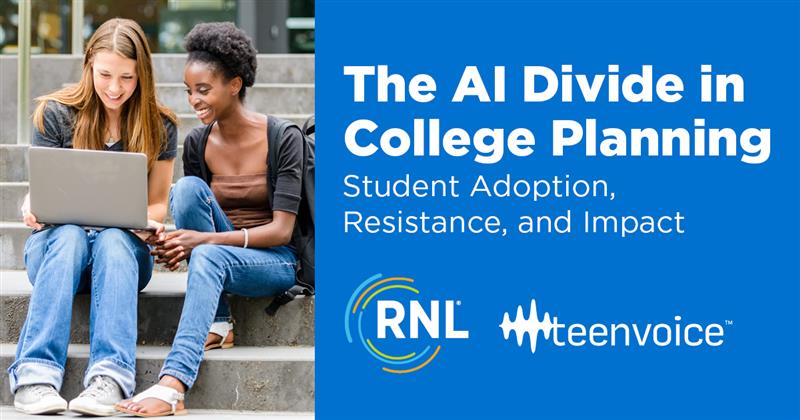
References
- Barnard, B. (2024, September 17). College admission: An AI revolution. Forbes.
- Brookings. (2024). What happens when AI chatbots replace real human connection? Brookings Institution.
- Eid, A. W., Mansouri, W. A., & Miled, A. B. (2024). Artificial Intelligence in Education: Predicting college plans of high school students. Journal of Intelligent Systems and Applied Data Science, 2(1), 42–55. Retrieved from
- Greenberg, J. (2025, June 28). How AI is helping students find the right college. Wired.
- Klarin, J., Hoff, E., Larsson, A. & Daukantaitė, D. (2024). Adolescents’ use and perceived usefulness of generative AI for schoolwork: Exploring their relationships with executive functioning and academic achievement. Frontiers in Artificial Intelligence (7). Retrieved from
- Majjate, H., Bellarhmouch, Y., Jeghal, A., Yahyaouy, A., Tairi, H., & Zidani, K. A. (2024). AI-Powered academic guidance and counseling system based on student profile and interests. Applied System Innovation, 7(1), 6.
- RNL, Halda, & Modern Campus. (2025). 2025 E-Expectations Trend Report. Ruffalo Noel Levitz.
- RNL & Teen Voice. (2025). AI Usage in College Planning Report: The AI Divide in College Planning. Ruffalo Noel Levitz.
- Singer, N. (2023, September 1). Applying to college? Here’s how A.I. tools might hurt, or help. The New York Times.





